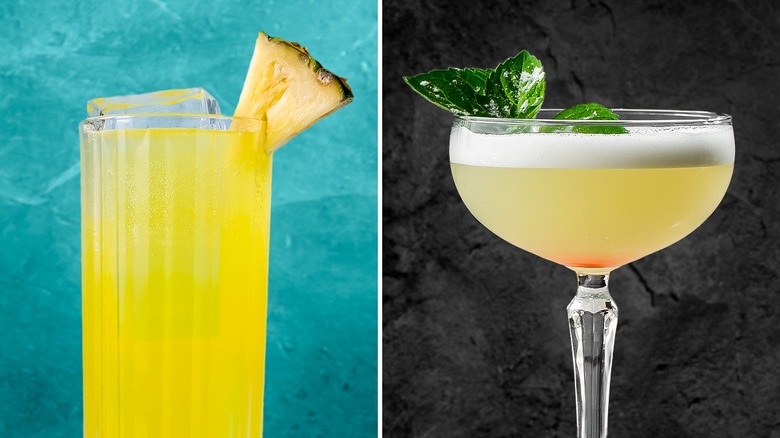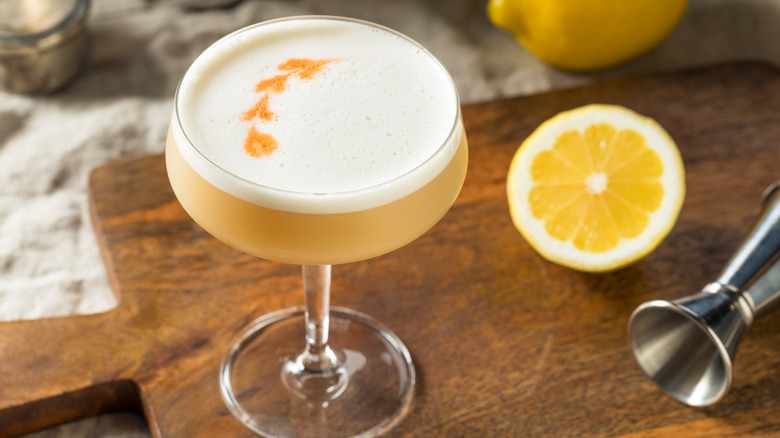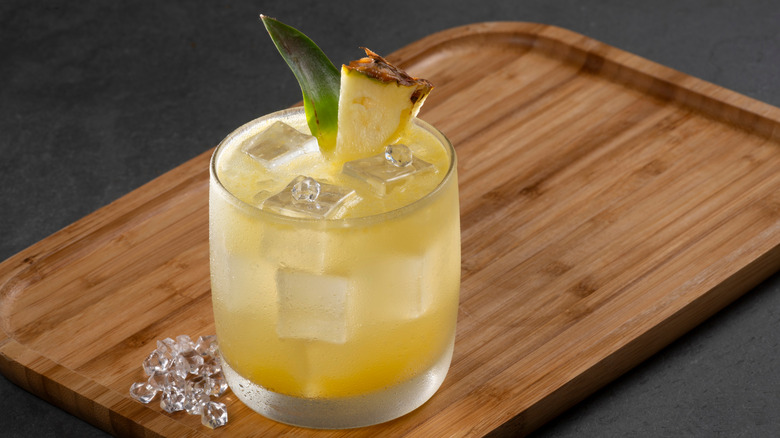The Difference Between Pisco Sour And Pisco Punch Cocktails
Pisco is somewhat unusual for a spirit in that it's so closely associated with one particular cocktail, you'd be forgiven for thinking it's the only way to drink it. But if you're willing to branch out beyond the classic pisco sour, there are a range of pisco cocktails to discover, including the pisco punch.
Both cocktails start with pisco (a distilled grape wine) and lemon or lime juice but take different paths in terms of flavor profiles. The classic pisco sour leans heavily on the citrus, putting it in the same camp as other sour cocktails, and includes an egg white to give it a signature froth. Pisco punch tends more towards the tropical thanks to the addition of pineapple juice and omits the egg white for a vegan-friendly drink.
When it comes to serving, a pisco sour is shaken with ice and strained into a goblet or coupe. Pisco punch is often served over ice as a single cocktail, or as the name suggests, made pitcher-size for sharing using an entire bottle of pisco. If you're looking for an easy way to serve a crowd, pisco punch should be your go-to.
What is a pisco sour?
Both Peru and Chile produce pisco, so it makes sense that both countries also claim pisco sour as the national drink. What we refer to as the classic pisco sour is the Peruvian version, possibly because one of the earliest references to the drink dates back to 1920s Lima. A pisco sour combines pisco, simple syrup, lime juice, and a raw egg white, shaken with ice until frothy. It's then served with a dash of bitters. Lime juice was listed in the original recipe, but the International Bar Association recipe uses lemon juice, and our own pisco sour combines both lime and lemon juices.
The Chilean version of the drink skips both the egg whites and bitters and opts for lemon juice instead of lime. Though some would argue that the drink is hard to recreate without the local limon de pica, an acidic lemon grown in Chile's Atacama Desert.
It's also worth noting that Peru and Chile have their own versions of the pisco spirit, made with local grapes, which impacts the taste of the cocktail. Peruvian pisco is distilled just once and sold as is. Chilean pisco can be distilled multiple times, aged, diluted with water, or infused with other fruits, resulting in a greater variety of tastes and strengths.
What is pisco punch?
Though the pisco sour is more famous today, the pisco punch has arguably been around much longer — as far back as the 1850s. It's thought to have originated in the Bank Exchange Saloon, a bar at the heart of gold rush San Francisco. The original recipe was never disclosed by the bar owner, who took the recipe with him in death, but reports from the time include a mix of pisco, lime juice, simple syrup, and pineapple. More modern recipes include pineapple syrup instead of the simple syrup and fresh pineapple.
As a counter to the pisco sour's froth, the pisco punch is often thickened with gum Arabic for a silky mouthfeel. It's an optional step, but easy to do with the use of store bought gomme syrup, and some brands even offer a pre-made pineapple gomme.
Compared to the pisco sour, you'll find more variations on pisco punch. Some recipes bump up the alcohol content with the addition of either limoncello or dry white wine, while others tone it down by diluting the cocktail with club soda or ginger beer. If you're serving a pitcher-size portion of pisco punch, consider the original recipe and bring back some fresh pineapple pieces for a bit of visual flair.


